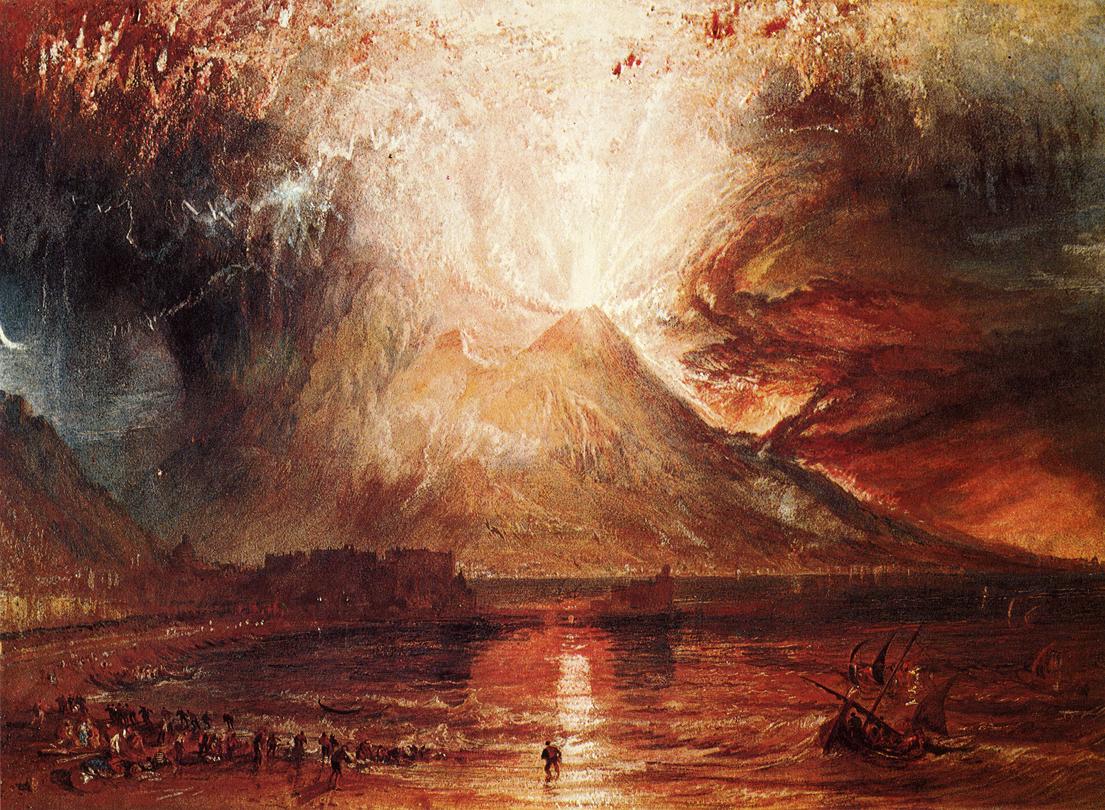 |
| Caspar David Friedrich, Two Men Contemplating the Moon, ca. 1820 |
By SAI GONDI
Who but is pleased to watch the moon on high
Who but is pleased to watch the moon on high
Traveling where she from time to time enshrouds
Her head, and nothing loth her Majesty
Renounces, till among the scattered clouds
One with its kindling edge declares that soon
Will reappear before the uplifted eye
A From as bright, as beautiful a moon,
To glide in open prospect through clear sky.
"Who But Is Pleased To Watch The Moon On High," William Wordsworth, 1846
Two men gaze into a horizon of ceaseless wonder observing the Moon's emanating beauty in Two Men Contemplating the Moon. The men, Friedrich himself and his follower August Heinrich, stand upon a hill pondering thoughts unknown to the viewer. Are they grieving over love? Are they immersing themselves in nature's soothing imagery? Does it truly even matter? Even without knowing their inner contemplations, the painting exerts emotion between the bond of two men, and even their attachment to Nature's glory.
Friedrich paints himself stern in deep thought, while Heinrich leans on him, depicting the men's relationship. Friedrich embodies wisdom that his pupil admires and eagerly awaits. They peer through a portal created by trees that encapsulate the Moon. Friedrich and Heinrich esteem the moon in comparison to the admiration of a beautiful women, and Wordsworth's poem exemplifies the moon's captivating qualities and its classical evocation of the female.
The brush strokes and its somber hues surrounding the radiating Moon welcome viewers. Friedrich positioned the men on a path that seems to carry on beyond the boundaries of the painting's frame. It forms and interesting stage for the characters and a unique viewpoint. The Moon hangs in the starless sky as the primary focal point. Friedrich could be hinting towards the Moon symbolizing a catalyst for knowledge and wonder as the men gaze into deep thought.
The image might allude towards the industrialization shift. The men, as previously mentioned, stand at the conclusion of a path. Along the path sits a chopped tree stump, clearly hacked down by the hands of humans rather than a natural destruction. The men appreciate nature while slowly behind them the industrial powers of humanity catch up. Though ultimately, I believe Friedrich mainly depicts a desire for knowledge, the beauty of nature while adding a rebellious aspect to the work.
Friedrich and Heinrich sport German garments in the painting during a time of French influence. This signifies his loyalty to his mother country while showing he willingly rebels against the Napoleonic era. This subtle component of his painting represents a major part of Friedrich himself. He was not going to conform to a society which restricts him from truly believing and living how he desires.













